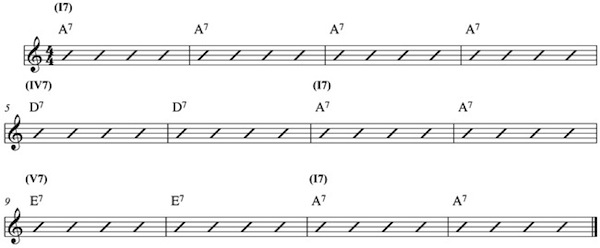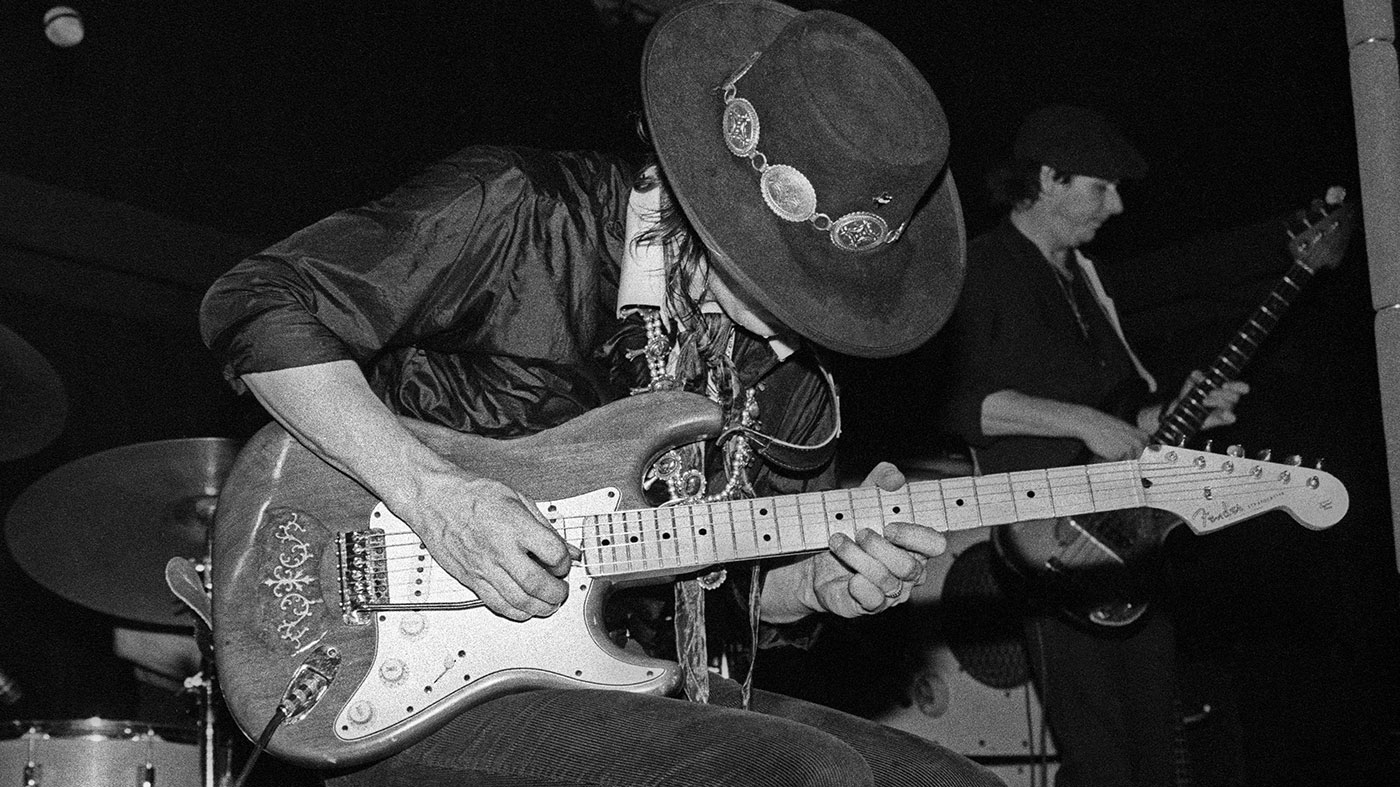In this lesson, I’d like to show you a quick and dirty way to outline the changes in a 12-bar blues in A, rather than blowing over the whole thing with the same scale. There’s an easy way to do this without learning any theory, or any new scales or patterns. We’re going to use something I’m sure you’re very familiar with.
Let’s take a standard 12-bar blues in A, which will look something like this:

We’ve got three chords to deal with: A7, D7 and E7.
As you already know, you can blow over the whole thing with the A Major/Minor Pentatonic Scale and no one will bat an eyelid. However, there’ll come a point when you want to really outline the changes instead of just blowing past them. This can be a lot to get your head around early on, so here’s an easy way to do it.
Over the A7
Over the A7 chord we’re going to play A Minor Pentatonic. Here’s a diagram to help you but I’m sure you know this scale like the back of your hand.

Over the D7
Over the D7 chord we’re going to shift this pattern up two frets, that’s all. You can think of it as B Minor Pentatonic but you’re really playing D Major Pentatonic. Here’s a diagram to help but all you need to remember to do is shift A Minor Pentatonic pattern up two frets when the chord changes to D7.

Over the E7
Over the E7 we’re going to repeat the process and shift the pattern up another two frets. You could think of it as C# Minor Pentatonic or what you’re really playing: E Major Pentatonic.

How simple is that? What you will need to do is watch your phrasing when you change to the D7 and E7 patterns but apart from that, the minimal thinking required here will allow you to get some professional sounding results over a classic 12-bar blues progression.




Cool trick to know. Thanks so much.